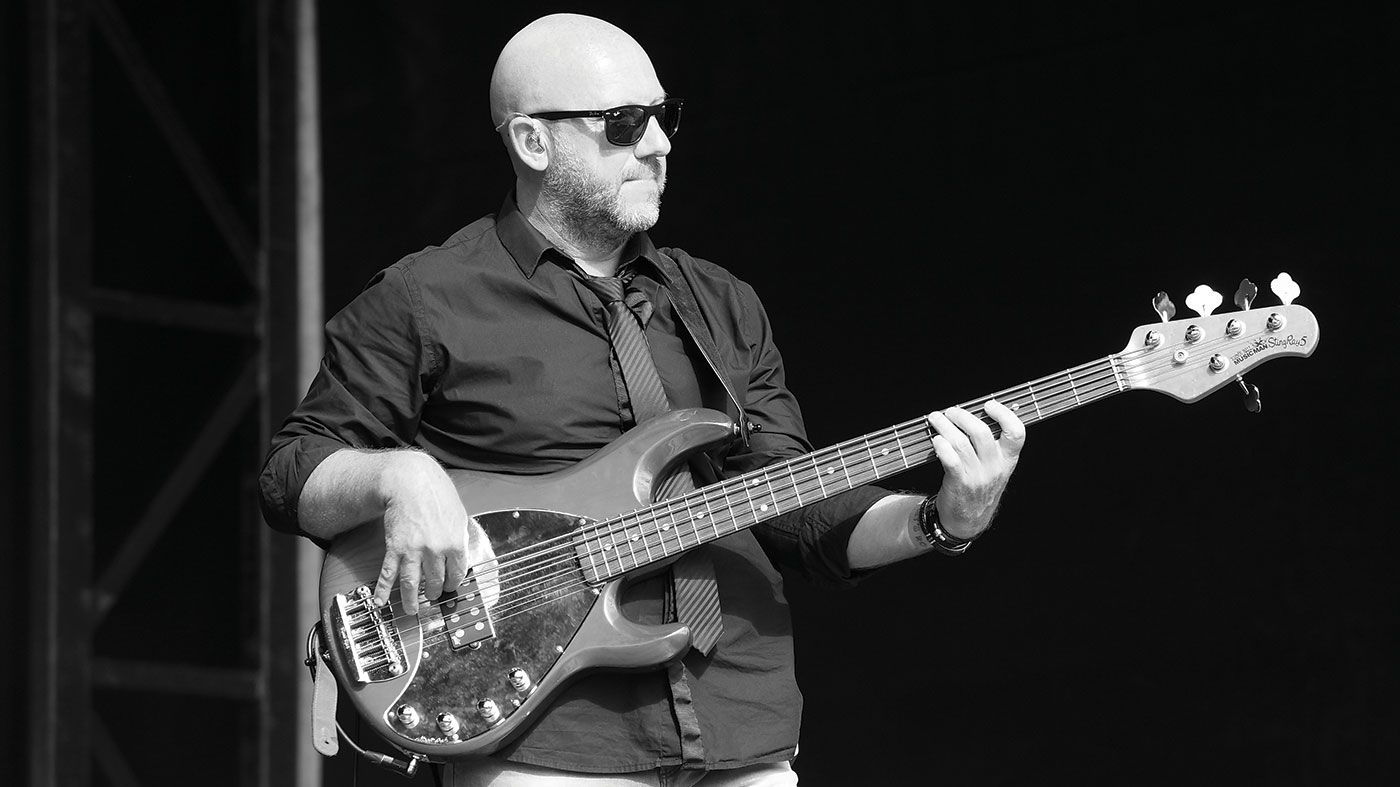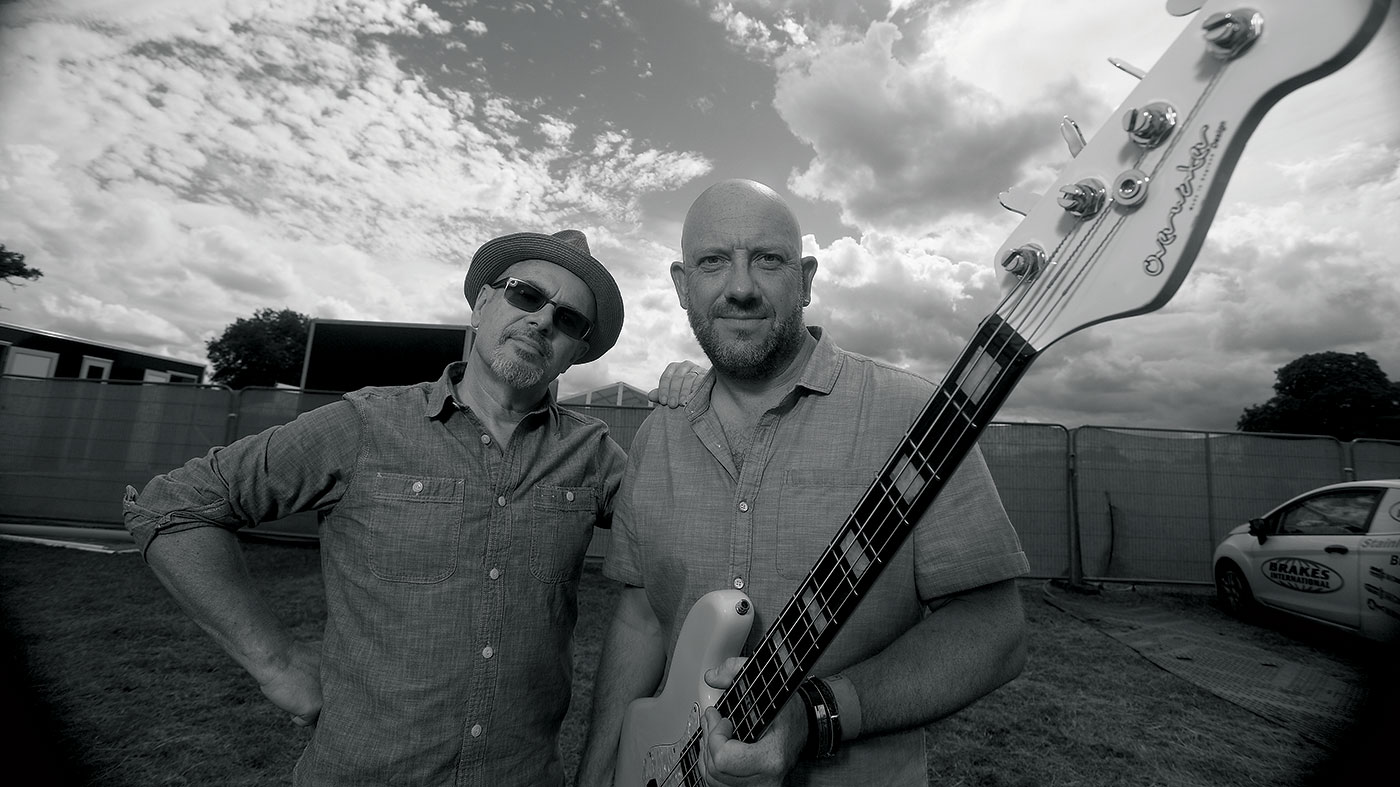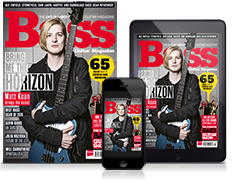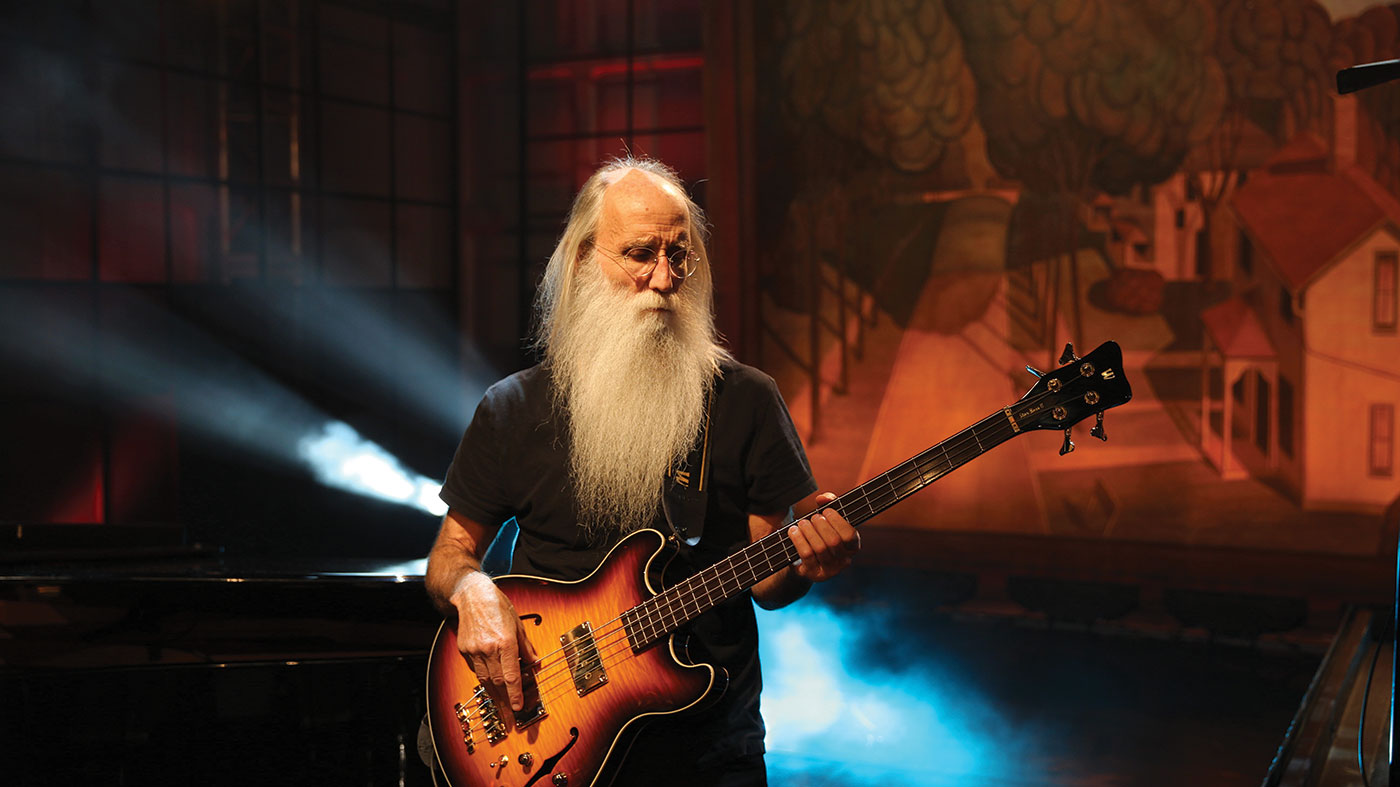Paul Geary on breaking into session bass playing, career turns and lessons learned
Insight from the session supremo

Ever wondered how to break into session bass playing? There’s only one way to find out how - by asking the stars. We kick off with an in-depth interview with session and stage veteran Paul Geary, whose CV includes quality studio and tourbus time with a stellar cast of pop and rock musicians from George Michael, Westlife, Lisa Stansfield, Chris Rea, a brace of Osmonds and Gabrielle to his current gig with Nik Kershaw.
Leicester-born Paul Geary has enjoyed a long and star-studded career as a bass player - whether as the go-to bassist for a multitude of chart-topping musicians from a range of genres, a TV, stage and studio musician or as a respected bass educator at ACM in Guildford.
The late George Michael employed Paul, as did Chris Rea, Paul Young and now Nik Kershaw. Paul has travelled the world, playing in venues from stadiums down to clubs; and he’s amassed a ton of wisdom that all bassists should hear.
Regular readers of our sister publication Bass Guitar Magazine will have benefited from Paul’s tuition column for many years. We’re lucky to have had him on our team, given his experience in the industry - so read on for memories of a career in bass like few others, as well as his tips for anyone hoping to kickstart a session career.
How did you get started as a bass player, Paul?
After a while, I was so into bass that I really didn’t hear the top-line melodies in music anymore
“When I was around 16 or 17, I got involved with a non-denominational gospel church in the Leicester area, which is where I first picked up a bass guitar, simply because the church band needed a bass player. It was a Fender copy of some kind, and they suggested I give it a go. The guy who owned the bass showed me a little bit, but basically I just watched, listened and worked it out.
“By the second week I was in the band - sitting down, because I couldn’t work out how to stand up and play! After a while, I was so into bass that I really didn’t hear the top-line melodies in music anymore. I tuned in to any low notes that I heard in popular songs, whether it was the Beatles or Elvis or whatever.”
When did bass become serious for you?
“After a couple of years, when I’d become pretty handy on the bass. It turned out that I had a natural affinity for the instrument: although bass has been hard at times over the years, mastering the core of it in the early days wasn’t hard, and it occurred to me that it might be worth pursuing. You have to give yourself wholeheartedly to any discipline in order to improve, and that’s what I did.”
Want all the hottest music and gear news, reviews, deals, features and more, direct to your inbox? Sign up here.
Did you have lessons?
“I did have lessons, but I almost quit after the first one, because, as you can imagine, after two years as a self-taught bassist, my posture and technique was all wrong. It was like starting again. I had to rethink everything that I was doing. Since then I’ve become a big believer in the correct posture and the correct ways of playing.
The Head of Bass at BIT was Jeff Berlin, who I got on well with, although he didn’t suffer fools lightly!
“I’ve never had an injury for that reason. It breaks my heart when players come up to me and tell me they can’t play for six months because they’ve got tendonitis. Students will ask me how to play a fast part such as Hysteria by Muse, and their whole body will be tensed up while they’re playing it. That’s the worst thing you can do. You need to relax to the point where your body is not doing anything out of the ordinary.”
What was the turning point for you?
“My church had connections in Los Angeles, where there was the fabled Musicians’ Institute. I’d tried to find a bass education in the UK, but there was nothing - the Royal Academy didn’t even recognise electric instruments! - so in 1986, I sold the shirt off my back, got some help from the church and at the age of 20 I went to study music at the Bass Institute Of Technology.
“My parents went ballistic, because I gave up my job as a graphic designer just before I was about to get promoted, but I knew I had to do it. Now I realise I was probably one of the first British musicians to actually grab the bull by the horns and go out there.”
What bass gear were you using at the time?
“By then I had an Ibanez Axstar, because I couldn’t afford a Steinberger and the Ibanez was the next best thing. I took that to the States with me and had private lessons with Billy Sheehan. I remember him teaching me three-finger picking.
“The Head of Bass at BIT was Jeff Berlin, who I got on well with, although he was a bit frightening because he didn’t suffer fools lightly. I was so green when I got there. I’d never heard of Jaco Pastorius, for example, although I managed to play some of his stuff.”

When did the idea of becoming a session bassist come to mind?
“I loved so much different music that I always knew I wanted to be a session player. The idea of going out and touring in a band that played just one genre of music never appealed to me. I loved funk, I loved R&B. I say to a lot of my students, I wish I could go back and play more different kinds of music, because back then I wanted everything.”
What was the church’s role in your studies?
“The masterplan was that I would come back and play gospel music, and I was up for it at first, but I started getting into secular music and worshipping that rather than any particular deity.
“Music is spiritual anyway, in its connection between people. I suppose I’d been brainwashed a bit: I remember I had an audition with Lisa Stansfield and they forbade me from going to it, because the music was secular. Eventually I was cast out of the church - literally.”
What was your next career move?
I was in three or four of these club bands. This was essentially my apprenticeship
“I didn’t want to get to the age I am now and say, ‘What if?’ so I got a job at Carlsbro Music in Leeds and started playing in covers bands. I met a whole set of musicians there: it was a great place to meet people.
“We played a load of working men’s clubs in Yorkshire in the early 90s. It was tough, because all the bands were in competition with each other. There was one really good band called Smartass. Our agent used to say ‘Go and see Smartass and watch their show, it’ll help you hone your skills’.
“I was in three or four of these club bands. This was essentially my apprenticeship. I did the lights and set up the multicore to the desk as well as playing bass. You’d do two sets a night, and the bingo was between the two sets. We’d be in the dressing room and you’d hear screaming and bottles smashing from the club.”
What basses were you playing?
“I’d bought a Kubicki Factor bass while I was out in California, because I was a big fan of Stuart Hamm. The neck was made of 36 glued strips of maple: it was incredibly stable. I also bought a 1988 Music Man five-string while I was there. I sold that Kubicki a few years later, purely for the money, and it’s a big regret.
“That said, for me, basses have to earn their keep. For strings, Jason How gave me a great Rotosound strings deal. Amp-wise, I used a Peavey TNT 100 combo which never let me down, even though I dropped it down club stairs and it got kicked and beaten up. I moved on to Trace Elliot shortly after that.”
When did sessions come along?
“My first big session was Chris Norman, the lead singer of Smokie, who has a massive following in Europe. I worked with him from 1995 to 2005. Then I played with Lisa Stansfield, and suddenly jumped from playing Grimethorpe Working Men’s Club to Sheffield Stadium.
“I remember when someone from Lisa’s crew came to pick up my gear and take it to rehearsal, I realised I was starting to break through... Around the same time I played with Chris Rea and Gabrielle. All this came from the Chris Norman gig. A lot of networking followed and I played with Liberty X, Blazin’ Squad and other pop acts through the 90s and into the 2000s.”
What were the high points of this period for you?
“A very high point was playing with George Michael in 1997 - that was very much a career highlight. I also played Top Of The Pops half a dozen times with Lisa Stansfield, Chris Rea, Gabrielle and others.
“At the time it was the ultimate music TV show - a real thing to aspire to. Then there was Geri Halliwell, Simply Red, the Lighthouse Family, Dane Bowers, Sophie Ellis Bextor, Rachel Stevens, Westlife... It’s a long list.”
What about touring?
“So many great venues. I remember playing a stadium in Outer Mongolia with Chris Norman, and I played Hyde Park during the 2012 Olympics with Nik, in front of 80,000 people. Then there was Wembley, G-Mex and Hamburg. Great places to play.”
You’ve done a lot of pop stuff. Should we assume that the bass parts are easy to play?
“No, that is a misconception. When I did the Here And Now festival with Bucks Fizz, the lines were technically very difficult to play. For example, The Camera Never Lies has a processed, sequenced line with 2/4 sections. The hardest thing I ever did was An Audience With Donnie And Marie Osmond on ITV in 2009, it’s all on Youtube.
I’m 50 now and you think life is going to get less busy, but it doesn’t! I’m going to keep touring, because it’s the core of what I do
“We had one day of rehearsal with an orchestral house band. It was a reading gig, and obviously I can read, but the bass parts were the slickest I’ve ever heard. Halfway through ‘Dancing In The Streets’ they asked me to step up onto this giant staircase and play a bass solo for a couple of bars. Donnie shouted ‘Go Paul!’ and off I went.”
Your regular gig is Nik Kershaw, who is a virtuoso musician.
“Definitely. His writing stands out from all the other 80s bands, for me: there’s something different about it. He was championed by Elton John for his guitar playing, and played the guitar solo on Elton’s single Nikita, which I never knew. I’ve been with Nik since 1998.”
You’re also an educator.
“I’ve been teaching at ACM since 1996. I was Head Of Bass in the early days at ACM, and then I became Head Of School. I’m 50 now and you think life is going to get less busy, but it doesn’t! I’m going to keep touring, because it’s the core of what I do, but I’m also as passionate about helping the next generation as I’ve ever been.”
What’s your current bass setup?
“I have a great deal with TC Electronic for amps and effects, which came about through Mark King, because he and Nik are best buddies. Mark came down to ACM to do some sessions and I loved his TC amp, so I got in touch with them and they began supporting me. I use their RH450 and 750 heads with 1x15 and 2x10 cabs in different configurations, plus the Corona chorus, Ditto looper and a phaser.
“For basses, I use my Music Man StingRay most of the time: it has a Glockenklang preamp fitted by Andrew Taylor-Cummings at Anaconda. I also have two lovely Overwater basses which Chris May made for me. I’ve always used Rotosound strings, even before I knew Jason How. At the end of the day, your tone is in your fingers. I use loads of different gear at festivals, but I always get the same sound. I rest my case!”


